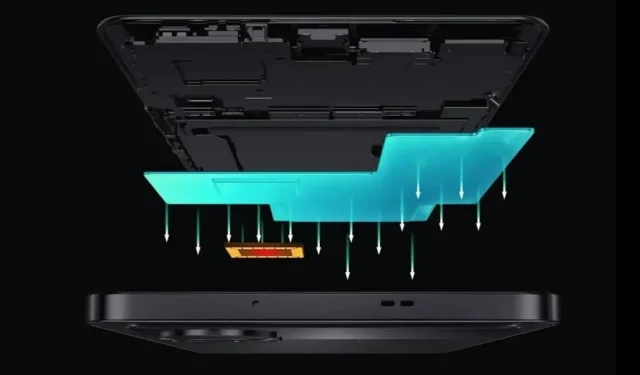Infinix develops advanced smartphone cooling system

Infinix is working on an improved smartphone cooling system, a more advanced version of the vapor chamber.
Smartphones are built with ever more powerful components (CPU, GPU, AI chip) to the delight of users like us. That being said, to be able to use this power in good conditions, the devices must be able to properly dissipate the heat generated by these components when they are used.
Infinix is working on an improved cooling system for smartphones
And in such a compact device as a smartphone, with electricity completely sandwiched between the battery and the screen, two elements that also generate heat, the situation is far from simple.
More often than not, a heatsink or other heat-transferring material comes into contact with the processor to remove the heat and allow it to spread elsewhere. In expensive smartphones, this passive process is often replaced by a much more efficient cooling system, namely the vapor chamber.
Steam chambers are liquid-containing cooling components. When heated, the heat turns this liquid into a gas (vapour), which travels from the processor to the other end of the vapor chamber, where it cools and becomes liquid again (condensation).
Condensation removes heat from the source. The vapor becomes liquid again, returns to the processor, and the cycle resumes. This is a much more efficient solution than waiting for an inert piece of metal to transfer heat.
A more advanced version of the vapor chamber
Infinix came up with their own version of the steam room. It’s hard to compare different designs here because we can’t run them on the same hardware platforms as we can with a gaming PC, but the illustration provided by Infinix shows a very large area where cooling can take place. This is probably a very good indicator of efficiency. According to the company, an advanced “3D”design has been used to improve the overall camera volume, which is all the more interesting since the width and length are necessarily limited by the dimensions of the smartphone.
While the principle is relatively simple, designing such a cooling system on such a small scale is a real challenge. The slightest manufacturing defect can prevent the correct operation of the unit. Consequently, the theoretical design will now have to face the reality of production.
Finally, the real impact of such a system on very resource-intensive applications such as 3D games will need to be measured. Theoretically, overall performance should be less subject to fluctuations due to thermal throttling (or “thermal throttling”, the purpose of which is to reduce the performance of components to a lower temperature).
Leave a Reply